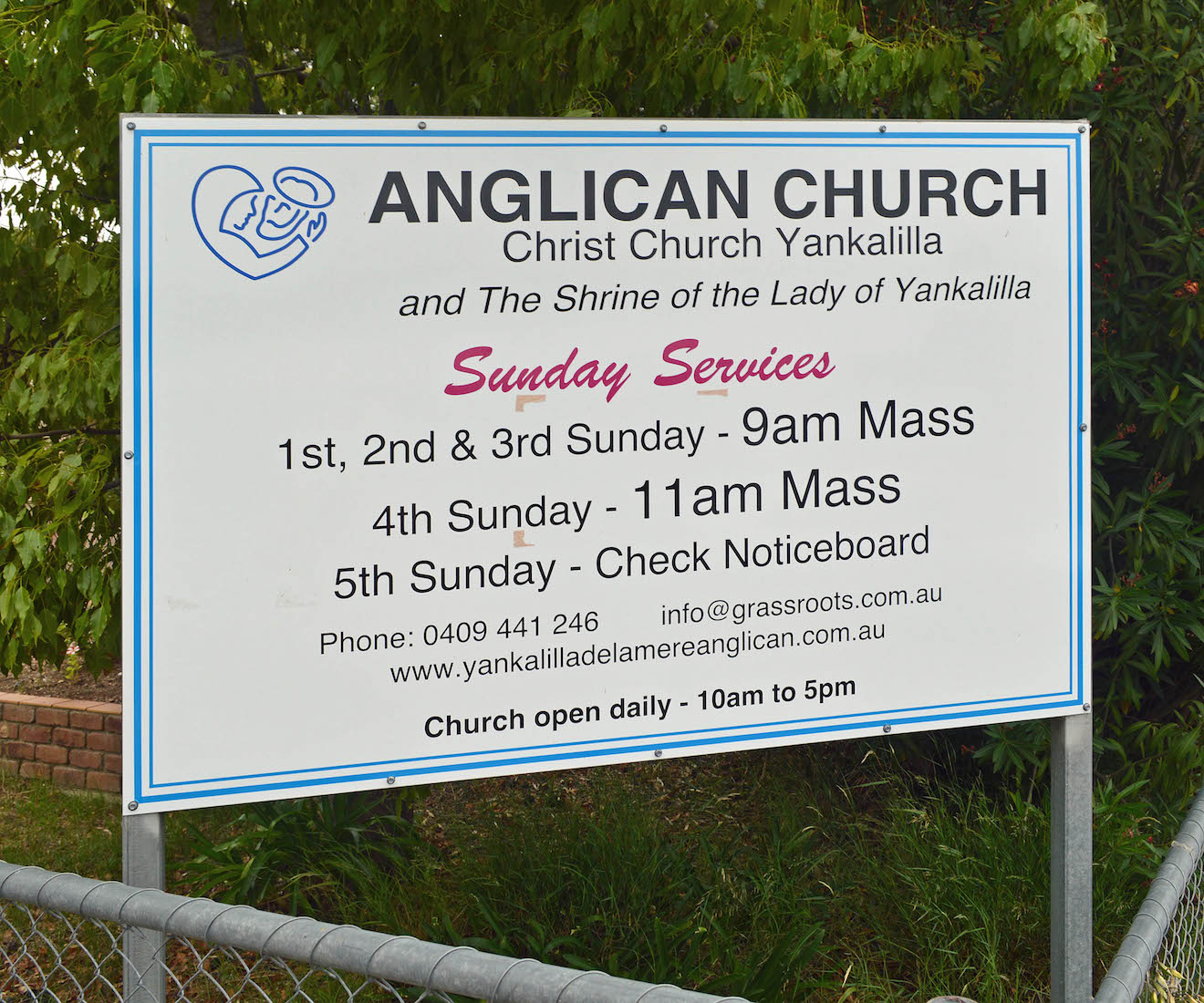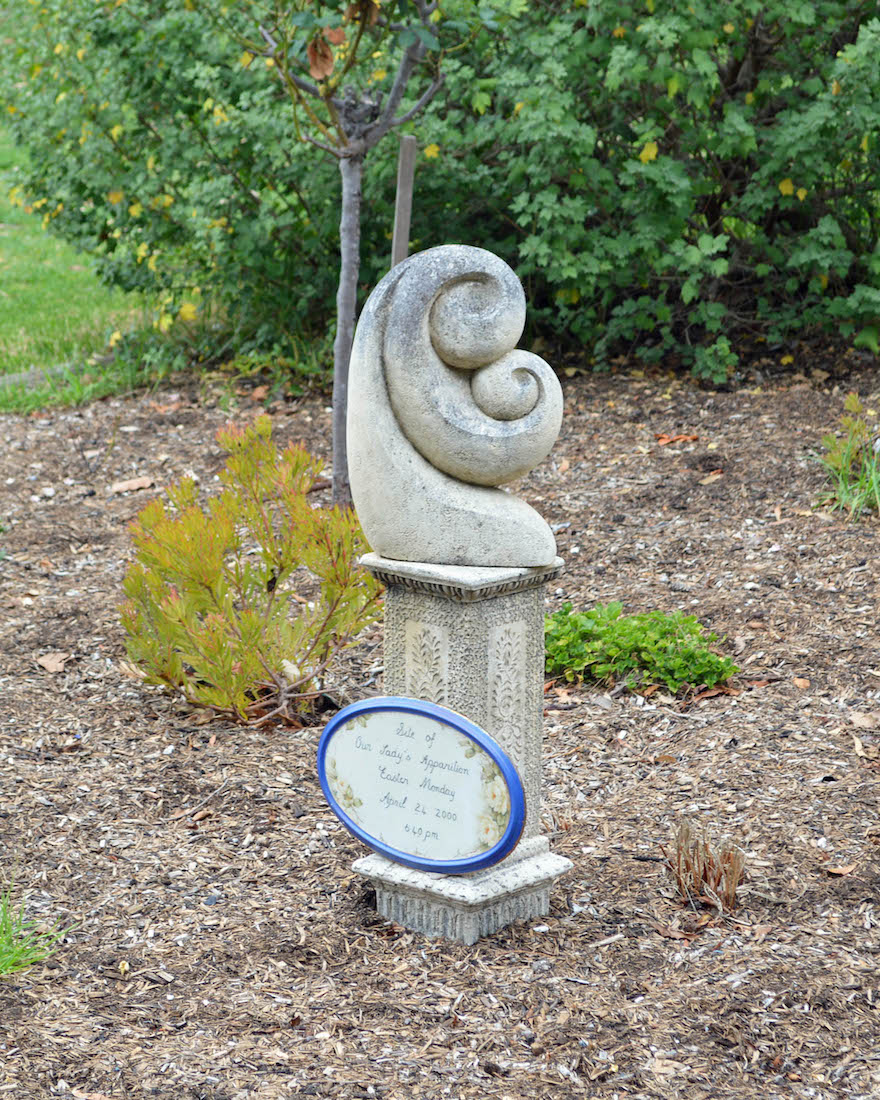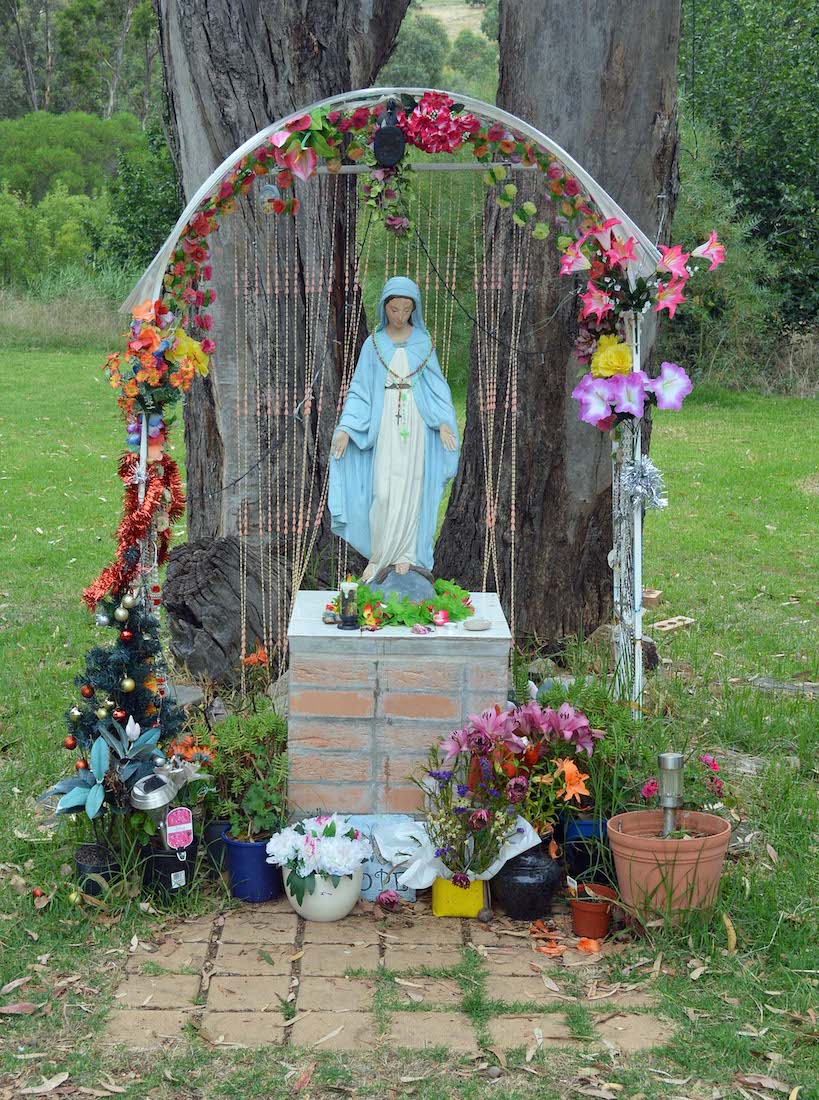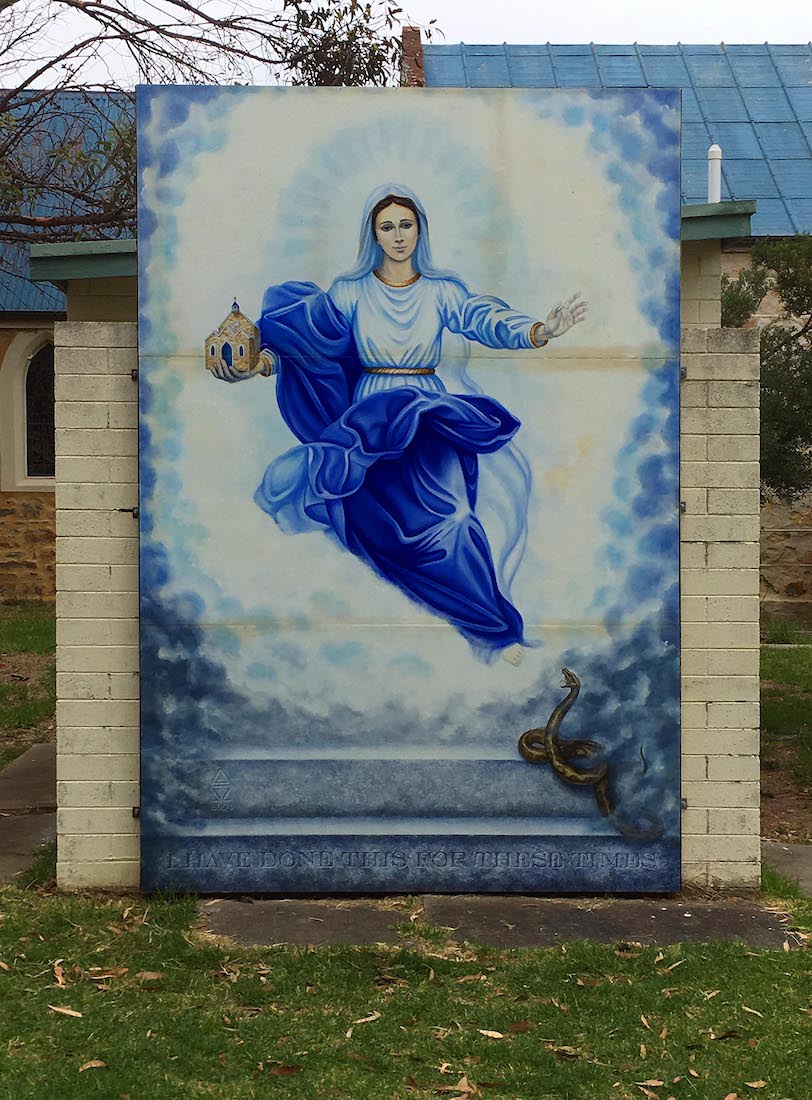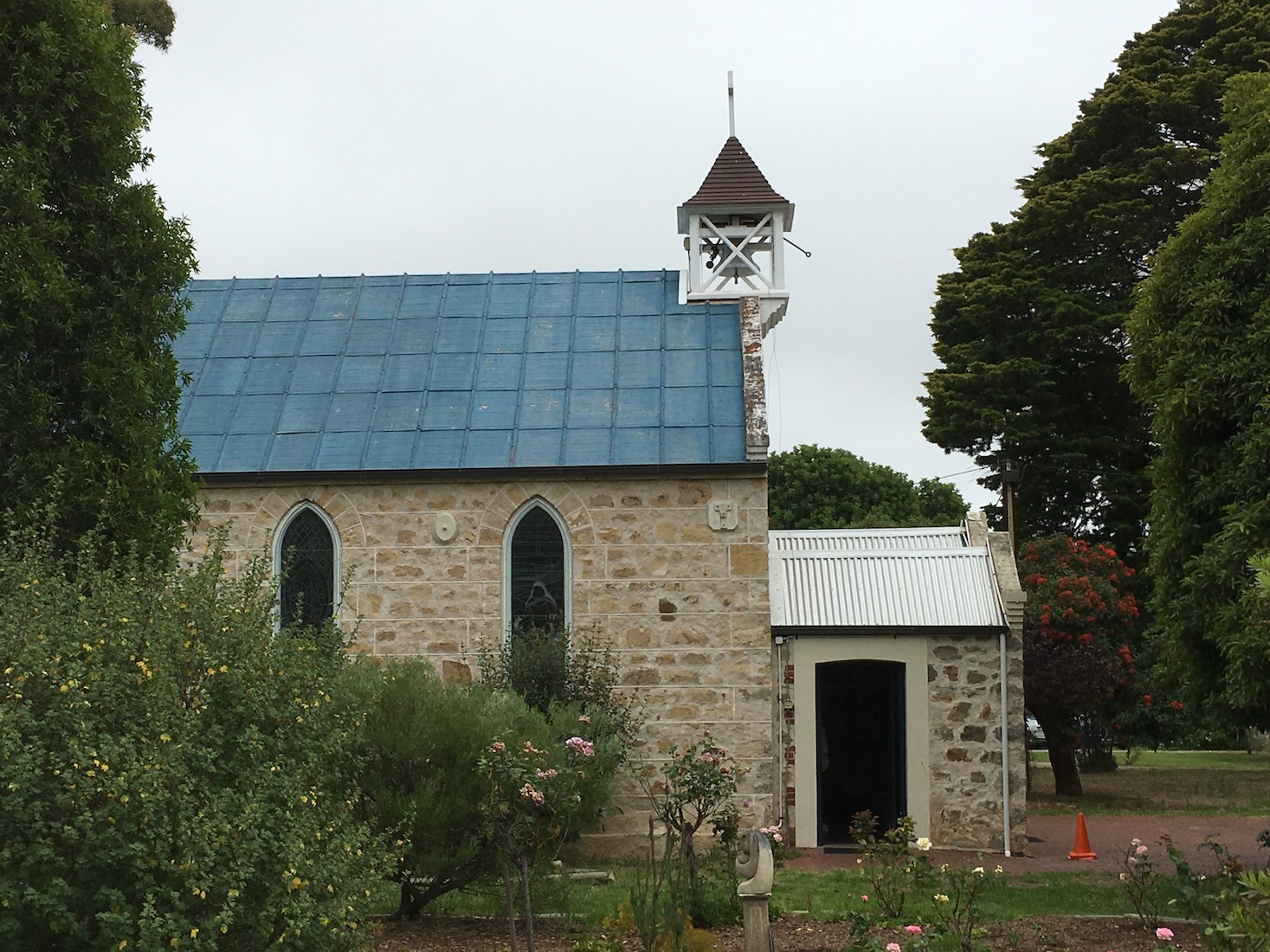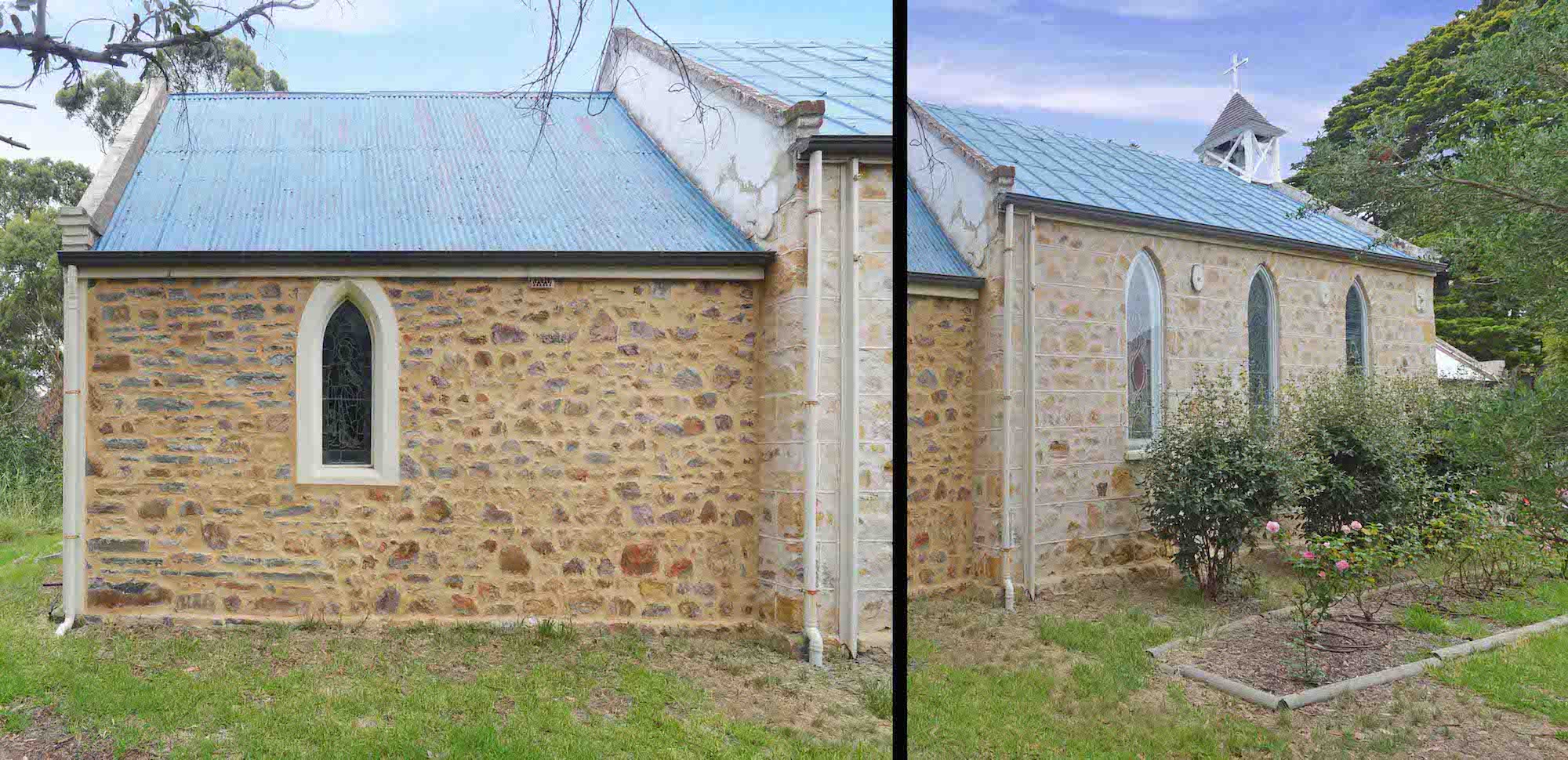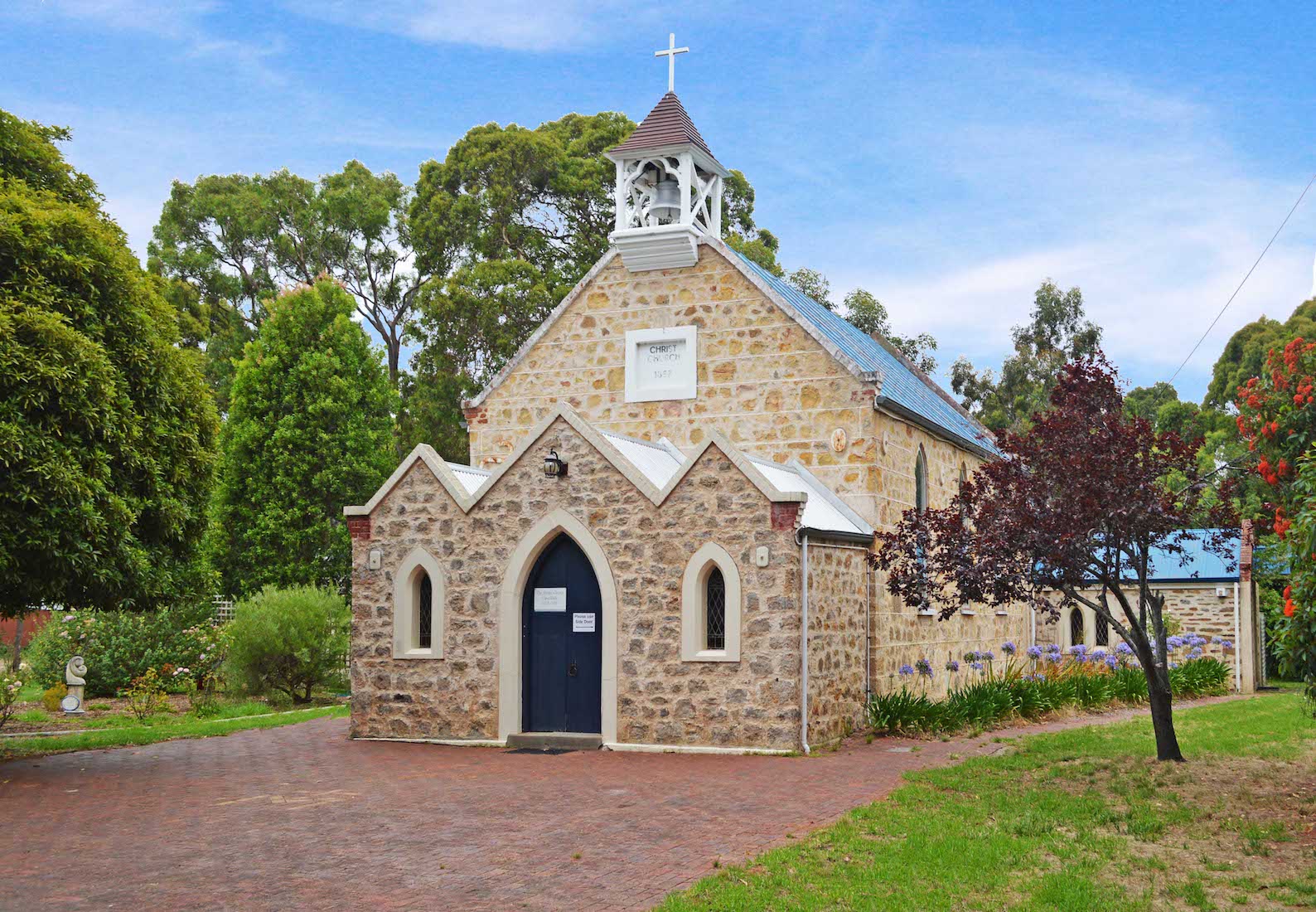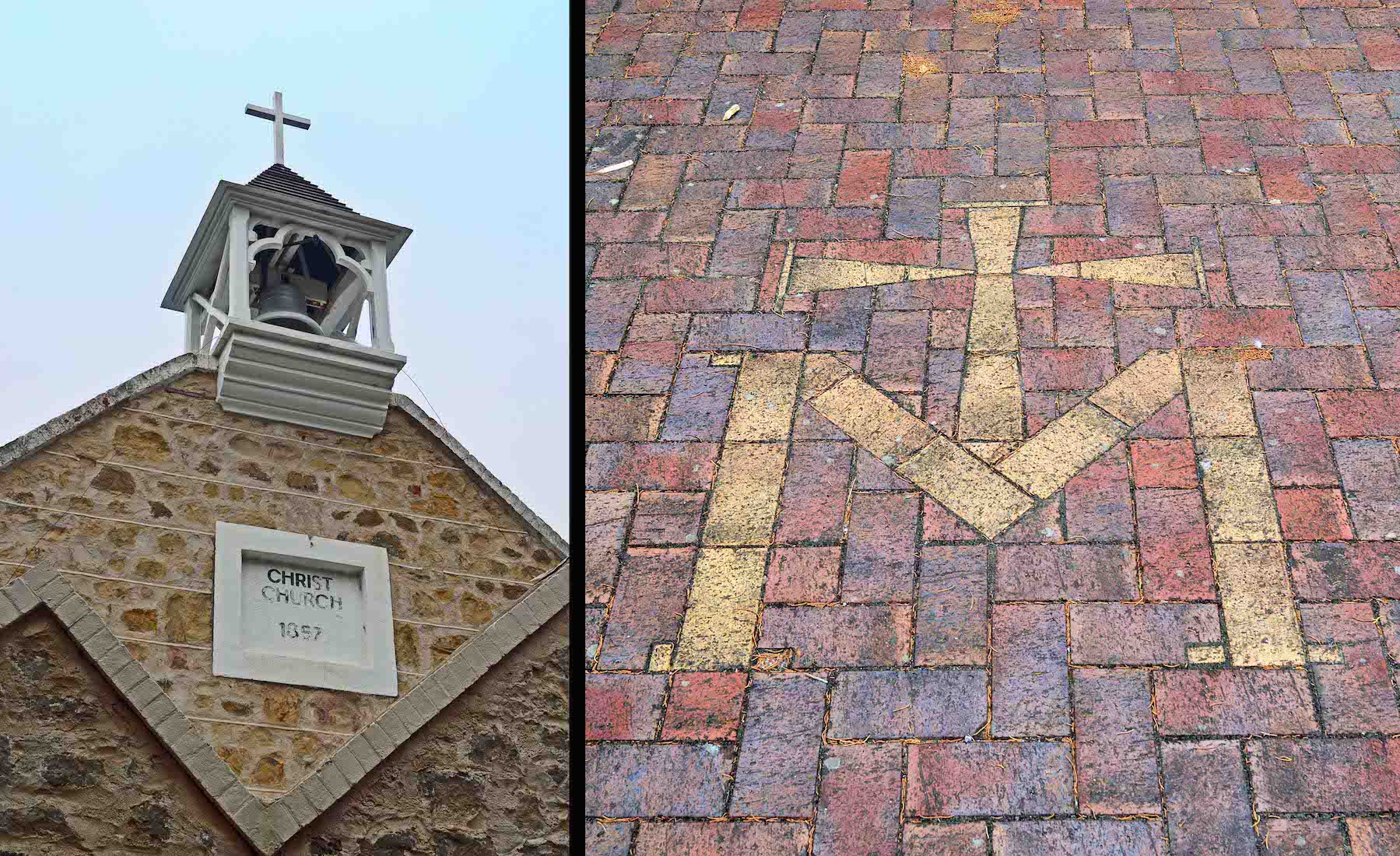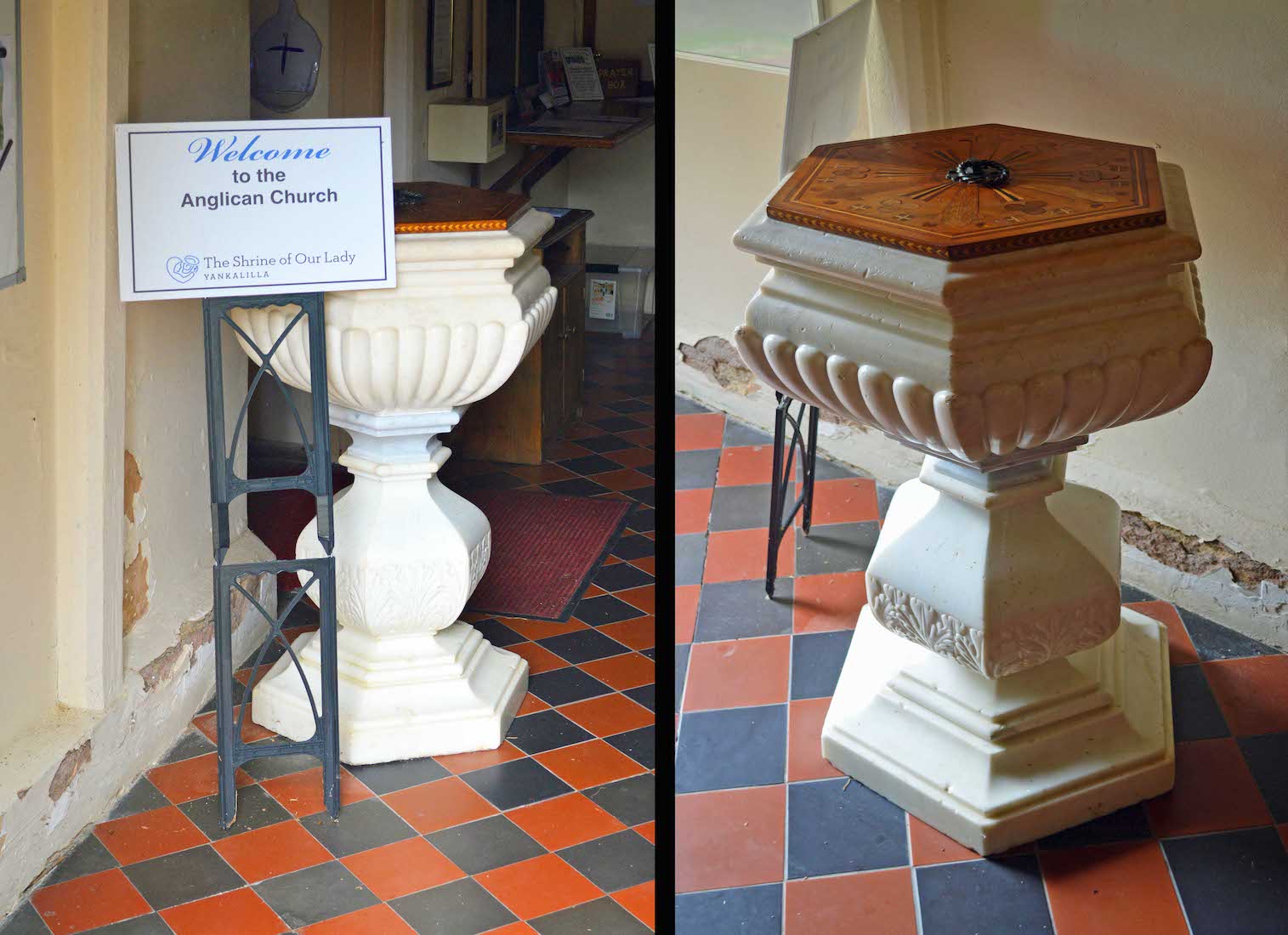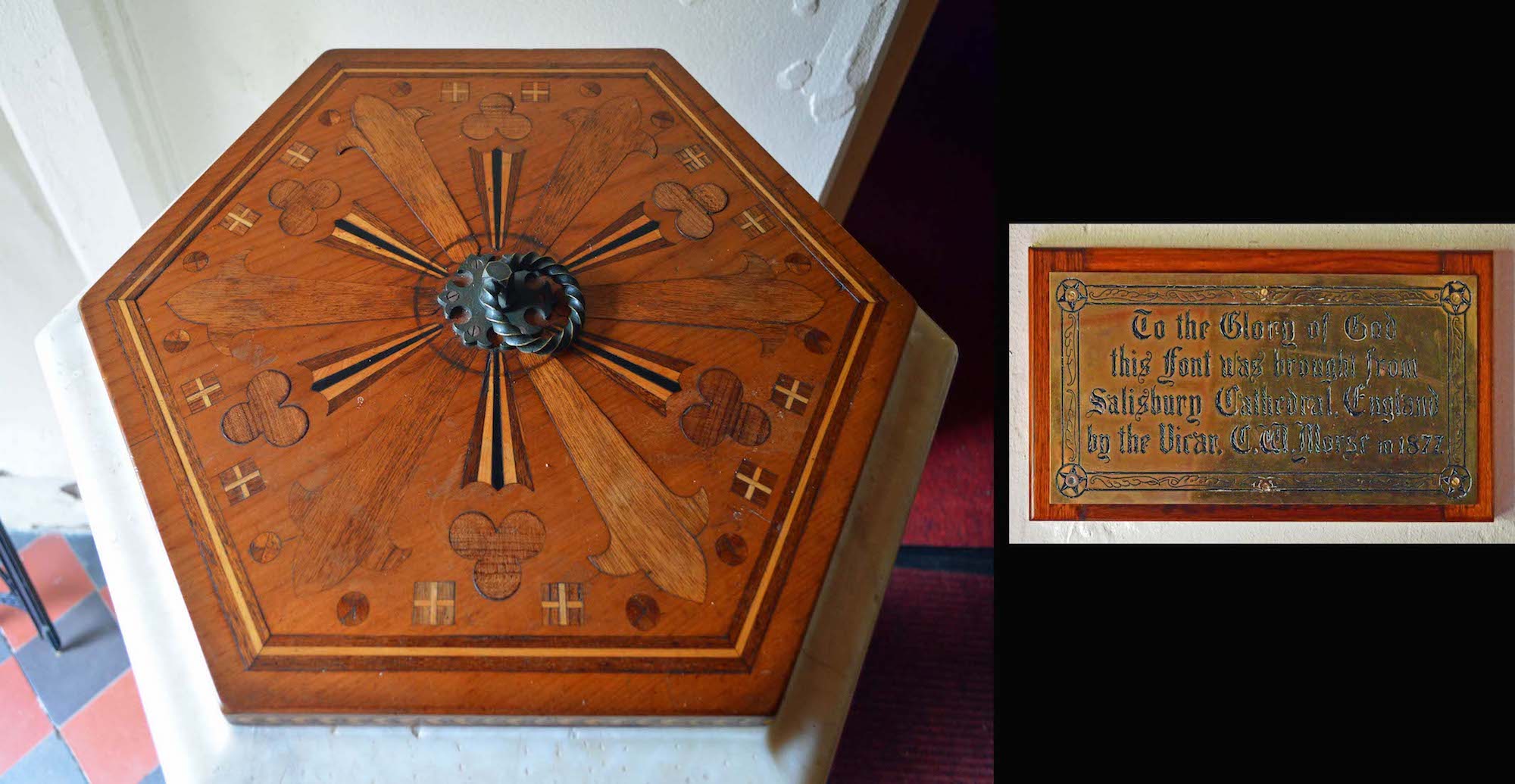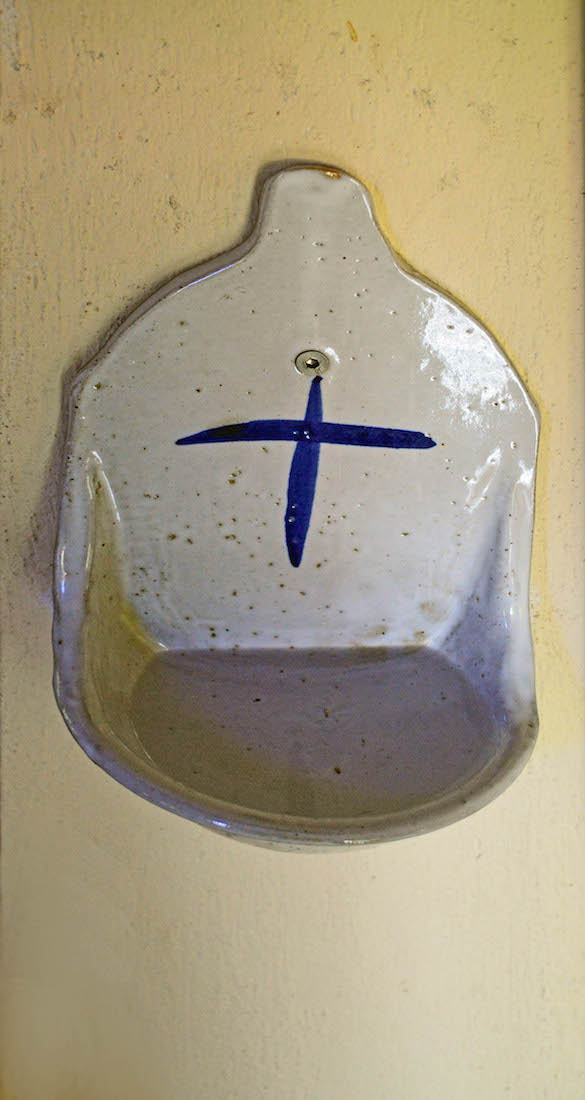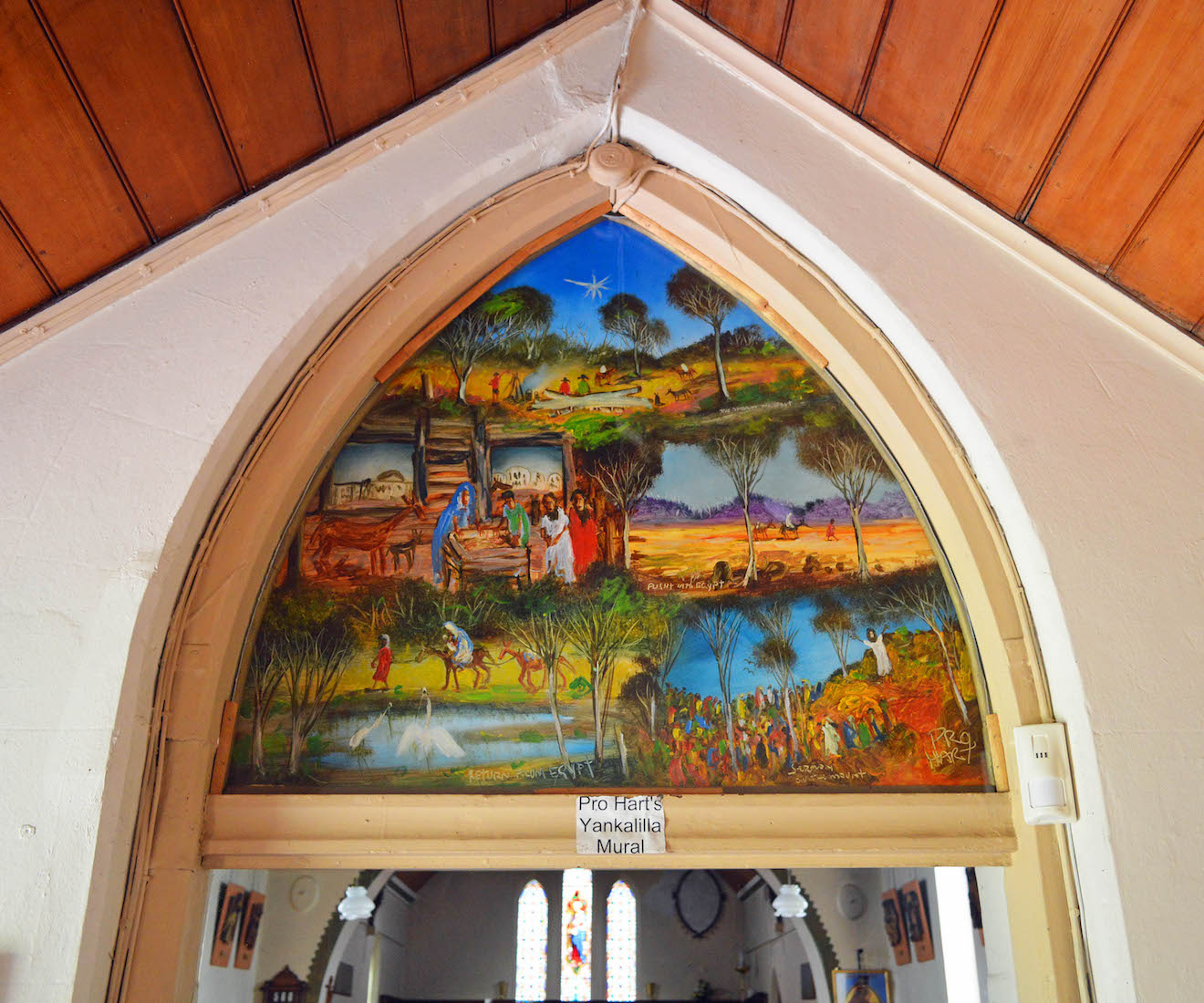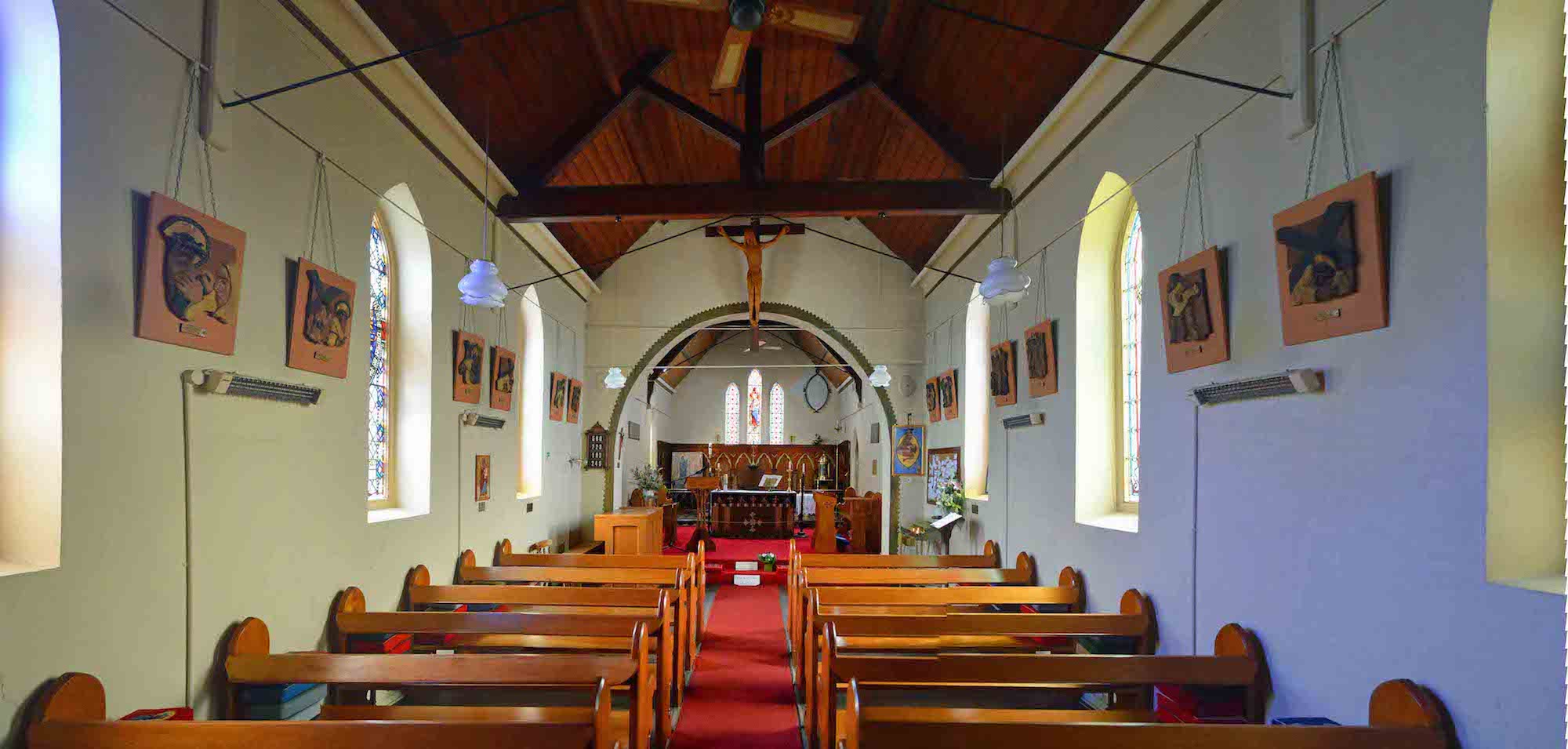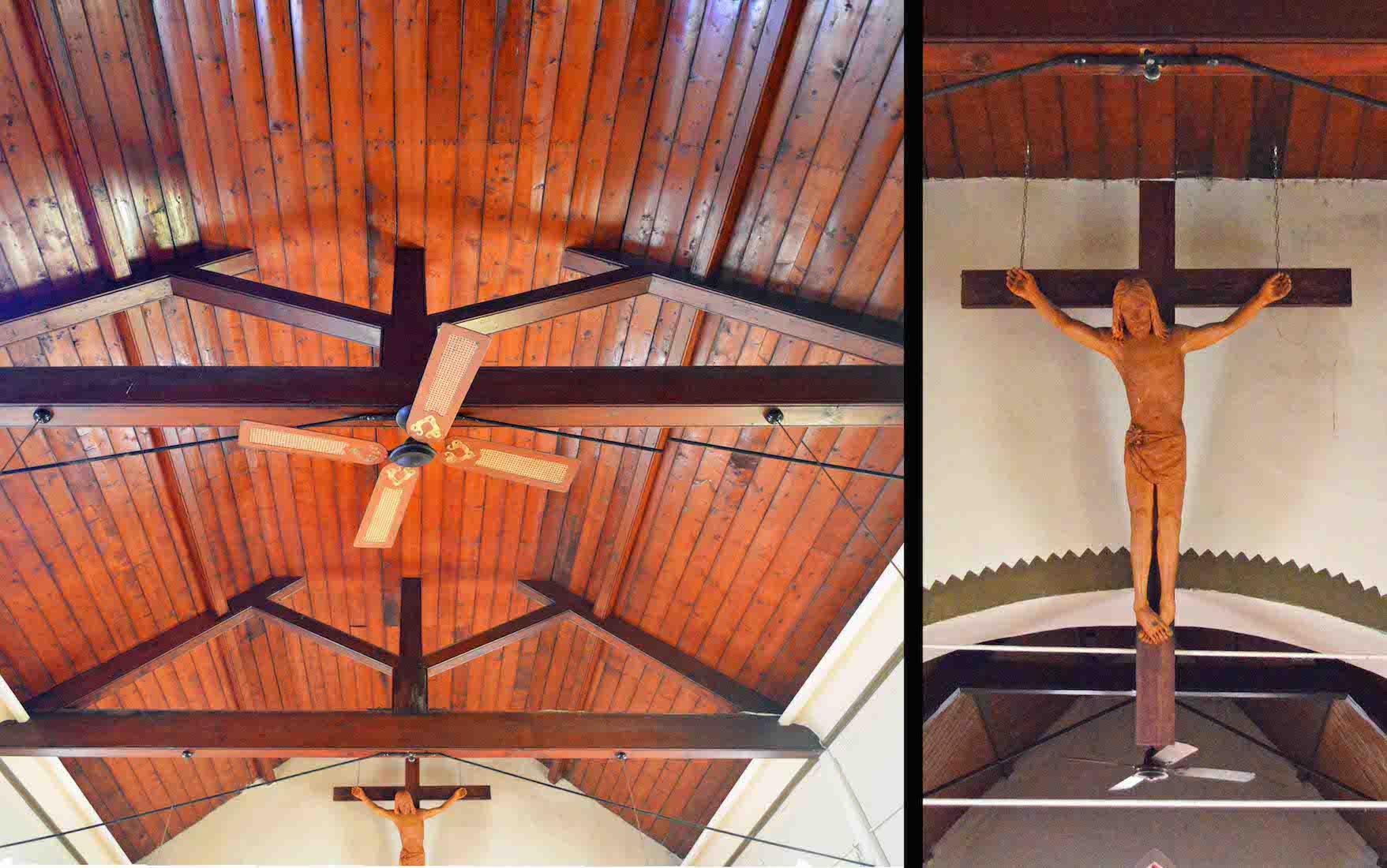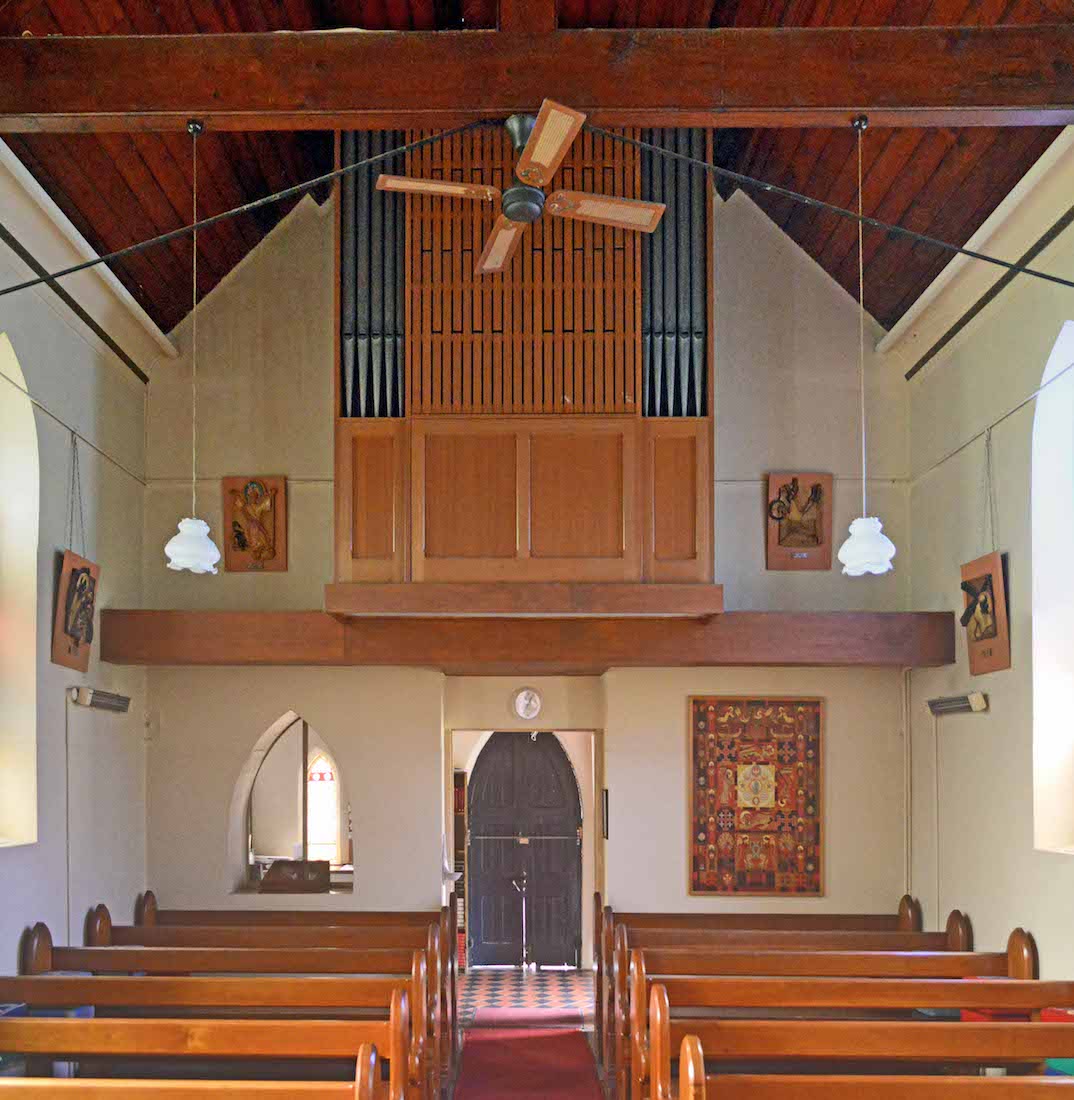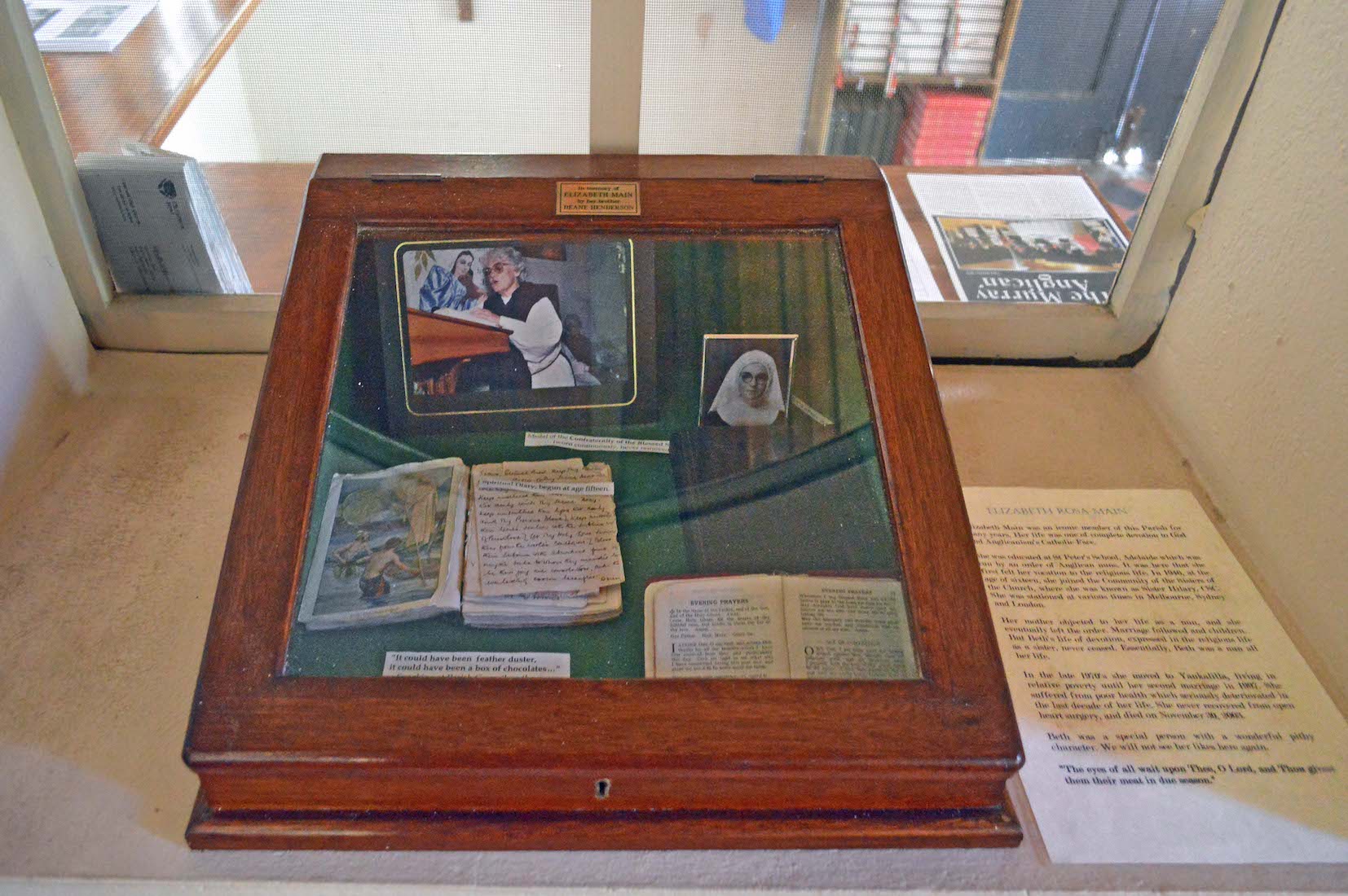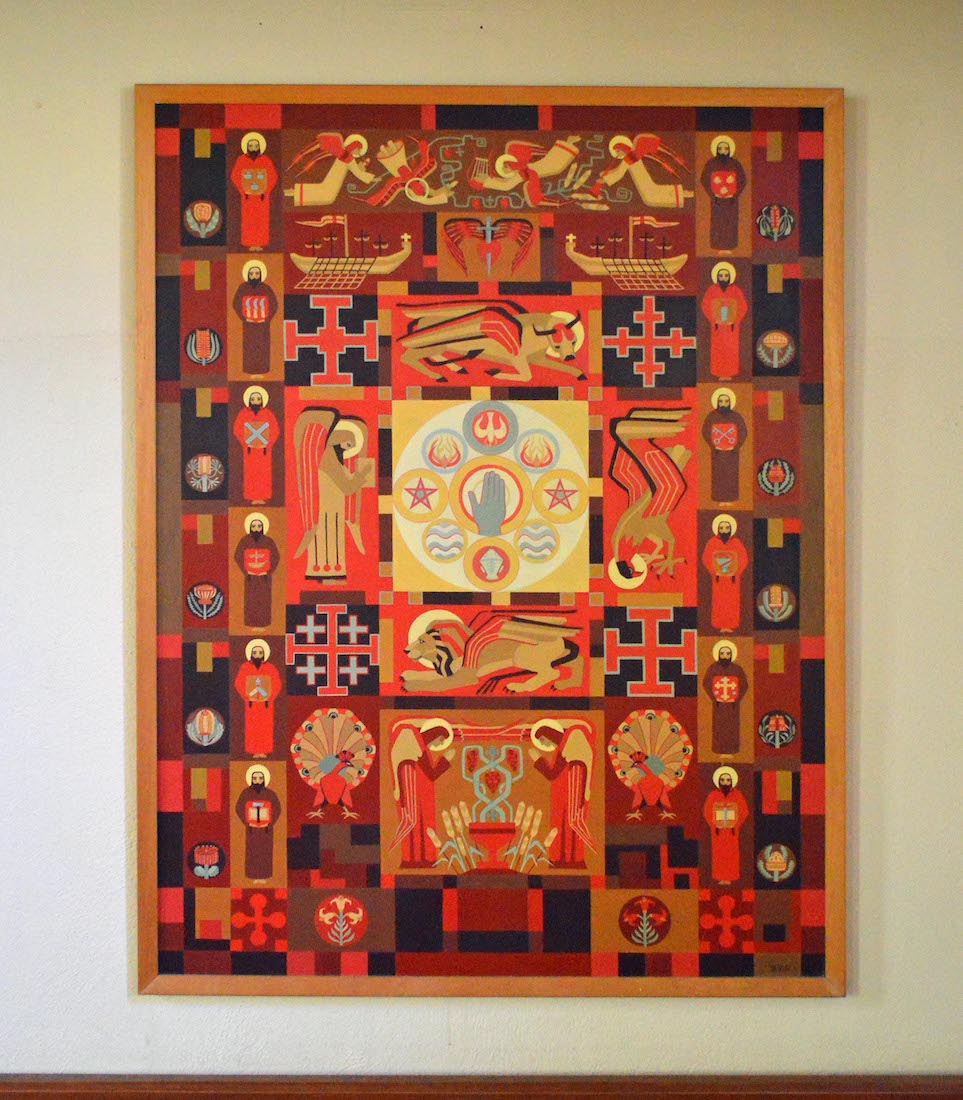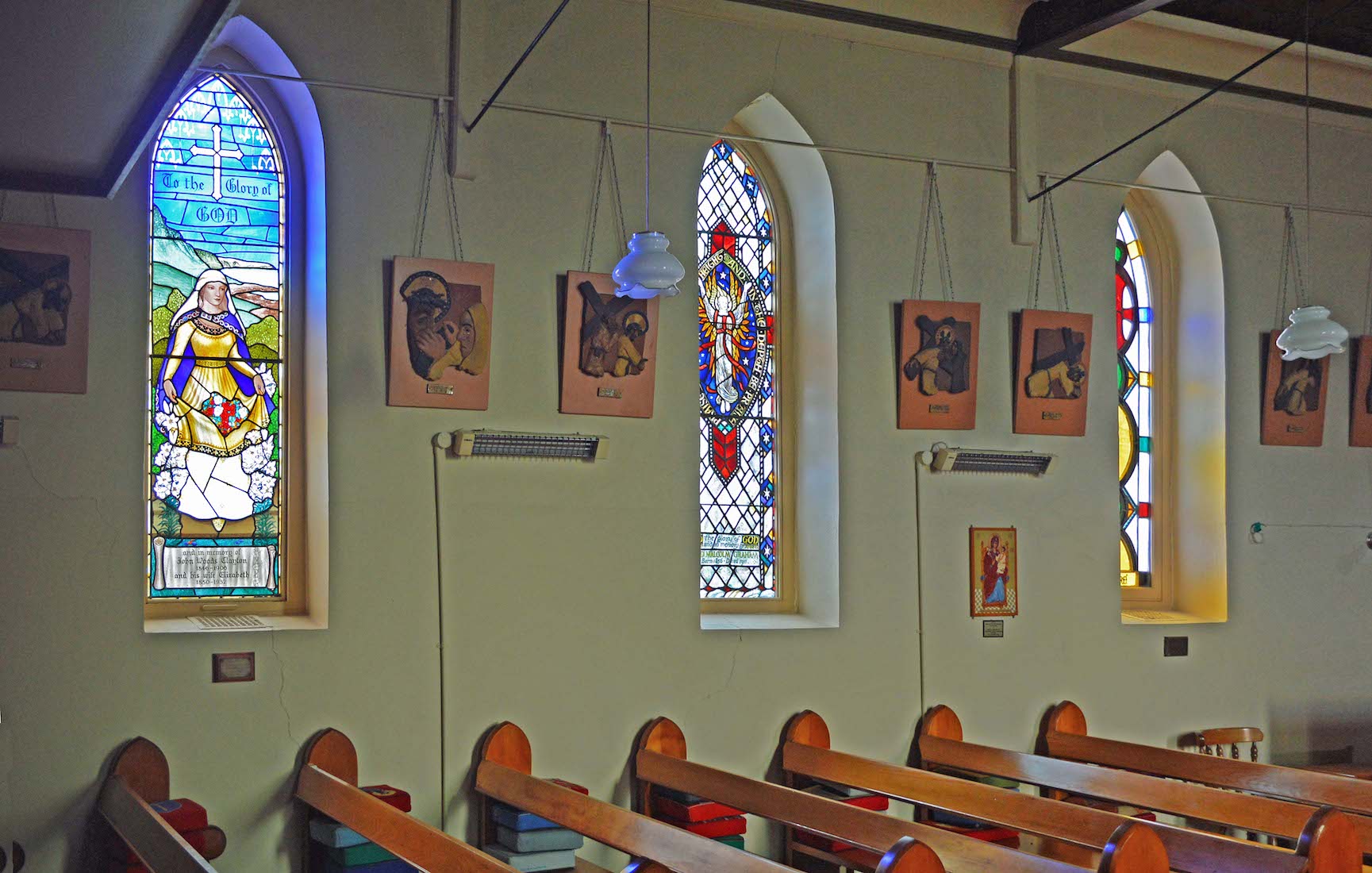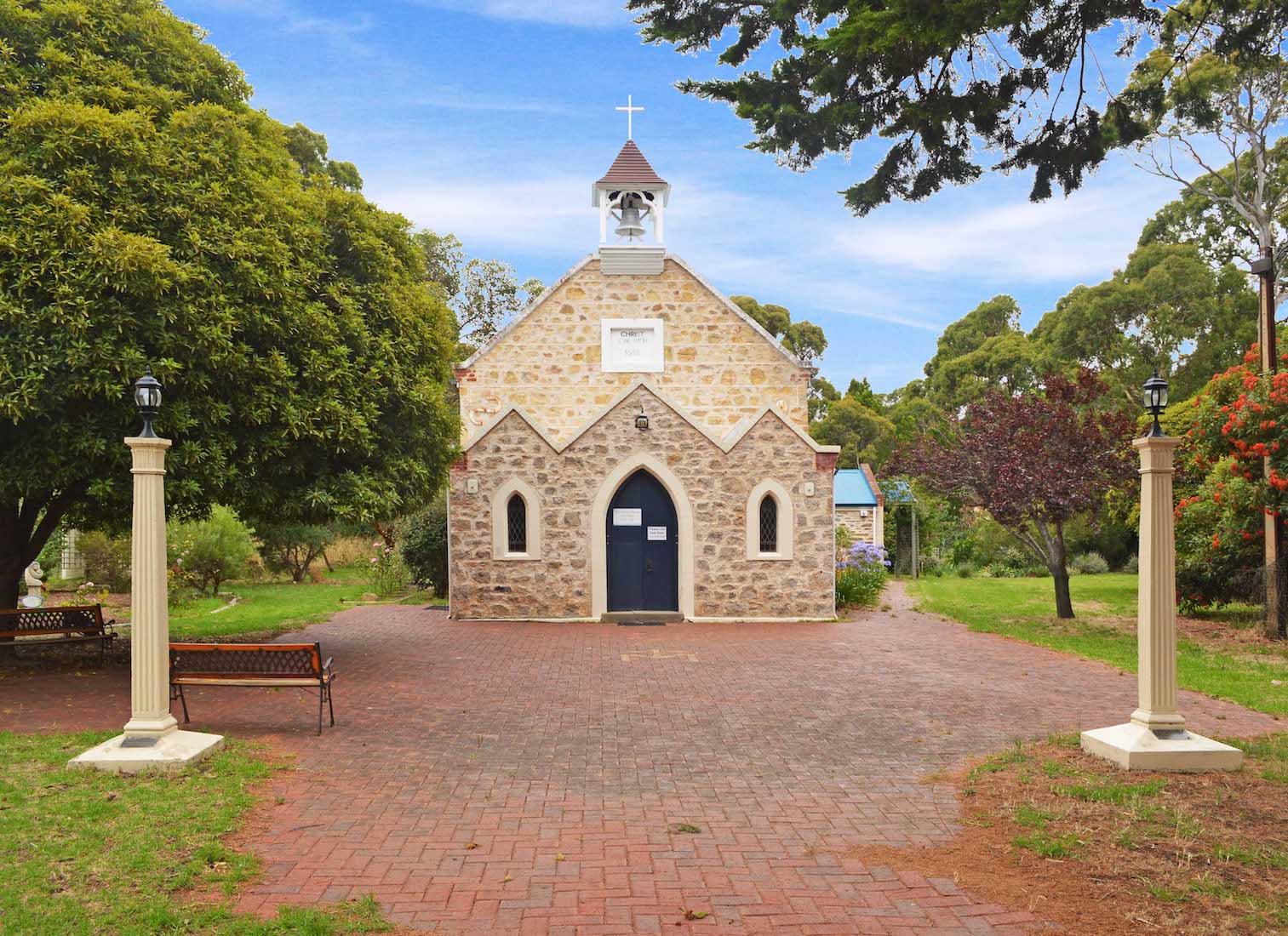
Christ Church, Yankalilla, is an attractive old Anglican church set back on the south side of Main South Road. The original church (the nave with a small apse) was opened on 9 July 1857 by Augustus Short, the first Bishop of Adelaide. The structure cost £300. There were some 200 people present. INDEX
2. SATELLITE VIEW
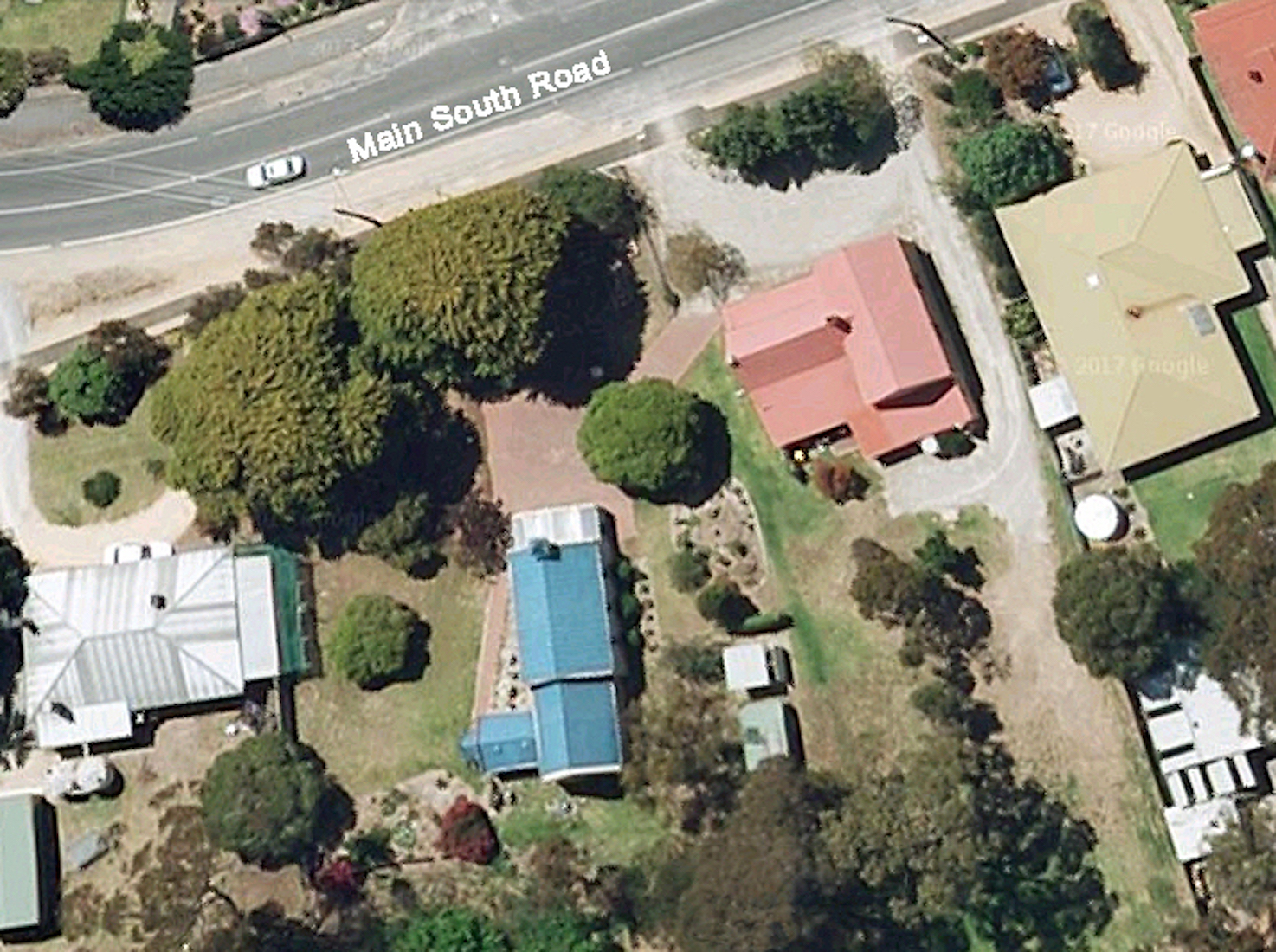
From the satellite view we see that the Church has a roughly north-south axis with the sanctuary away from the road. We shall be using liturgical directions, so liturgical East (with a capital E) is approximately geographical south. The Church is set on a spacious allotment, and is nicely screened from the road by trees.
3. SIGN
On the sign the Church name is subtitled ‘Shrine of The Lady of Yankalilla’. Herein lies a mystery, and also some controversy over the years.
4. GARDEN SCULPTURE
On August 24th 1994 a parishioner saw what appeared to be an image of the Virgin Mary high on the back wall of the church. The Virgin was veiled and leaning over the child standing on her lap. This evocative little sculpture in the Church garden is accompanied by text mentioning an Apparition on Easter Monday April 24th 2000 at 6:10 pm. I can find no further reference to this.
5. GARDEN SHRINE
This statue of Mary in the Church grounds makes a well-cared-for shrine. The then-incumbent priest, Fr Andrew Notere reported the 1994 sighting to Bishop Graham Walden, and eventually after two years, the image was acknowledged by the Parish Council and a wrought iron frame was placed around it. An article in ‘The Advertiser’ in 1996 attracted attention and pilgrims began to come to the town.
6. PAINTING
Also in the grounds is this quite spectacular painting of ‘The Lady of Yankalilla’, carrying a model of Christ Church, and with a serpent underfoot. Text below reads: ‘I have done this for these times’. Personally I find it incongruous that the public toilets are immediately behind!
7. PORCH AND BELL TURRET
We walk around the Church: this is a view of the North side. A belfry is set high on the roof at the end of the nave. The porch and bell turret were added in 1892. The first priest, Reverend Astley Cooper, was appointed in 1860. Then the Reverend C. W. Morse served in the Church from 1869-1901. He was noted for his religious and civic contributions.
8. CHANCEL AND NAVE
In 1879 a chancel, and a small vestry to the South of the chancel were added. The chancel was dedicated to the memory of the children of Dr J. Stokes Millner. The Millner children had attended the Christ Church Day School. In 1875 the whole family was drowned in the wreck of the ‘SS Gothenburg’ which sank off the Queensland coast in a severe storm.
9. WESTERN VIEW
Here we see the Church in its fine rural setting. In the building of the Church, the final addition was the extension of the vestry in 1996. This can be seen to the right of this view. The Church is open every day.
10. BELL AND PAVEMENT LOGO
Even now pilgrims come to Christ Church, especially those who count the Virgin Mary as an important part of their worship. This includes members of the Adelaide Catholic Community from the Kerula Church in southern India. We now enter the Church through the Northern porch door.
11. FONT
Archdeacon Morse was responsible for the acquisition of one of Christ Church’s treasures: a white alabaster font dating back to the seventeenth century. This font had been in use in Salisbury Cathedral in England, but was replaced with a newer font. On a visit to England in 1876 Morse saw the font and applied to the Dean of the Cathedral to have the old font for his church back in Australia. His request was successful and the font was shipped out to Australia.
12. FONT COVER
The font has a fine hexagonal cover made of of various inlaid timbers. The plaque on the wall reads: ‘To the glory of God this font was brought from Salisbury Cathedral, England by the Vicar C. W. Morse in 1877.’
13. STOUP
This unusual stoup holding holy water is located by the door through to the nave. Holy water is water that has been sanctified by a priest. Congregational members sprinkle themselves with it on entering.
14. PRO HART PAINTING
A real find in this Church is this collage by Pro Hart above the door into the nave. The scenes depicted are the appearance of the star, the birth of Jesus, the flight into Egypt and the return, and the sermon on the mount. Typical of Pro Hart, all are set in the Australian bush. There is at least one other Australian church featuring a Pro Hart painting – the Anglican Church at Broken Hill.
16. NAVE ROOF AND ROOD CROSS
The nave roof is of stained timber planking with the main trusses left exposed. It is a little unusual to find a rood cross hanging in a country church. The round sanctuary arch has a zig-zag painted border, in imitation of the styling of a Norman arch.
17. WEST WALL AND ORGAN
The West wall has an imitation balcony with two Stations of the Cross above, and below a ‘memorial window’ and an interesting framed artwork. A large stand of organ pipes also features, but I can find no information about this instrument.
18. ELIZABETH MAIN MEMORIAL
This is a memorial to Elizabeth Rosa Main who was a member of this congregation. She felt called to a religious vocation and joined the Community of the Sisters of the Church where she served for many years. She eventually left the order and married, but continued to serve her God.
19. ARTWORK
This is a very interesting collection of images. You might find the 12 disciples, four Jerusalem crosses, the Dove of Peace, the Eucharist, symbols of the Four Evangelists, and angels in praise and worship.
20. NORTH NAVE WALL
We turn to the North nave wall which we shall investigate in more detail. We note the windows and Stations of the Cross, and also an image of the Madonna and Child.


